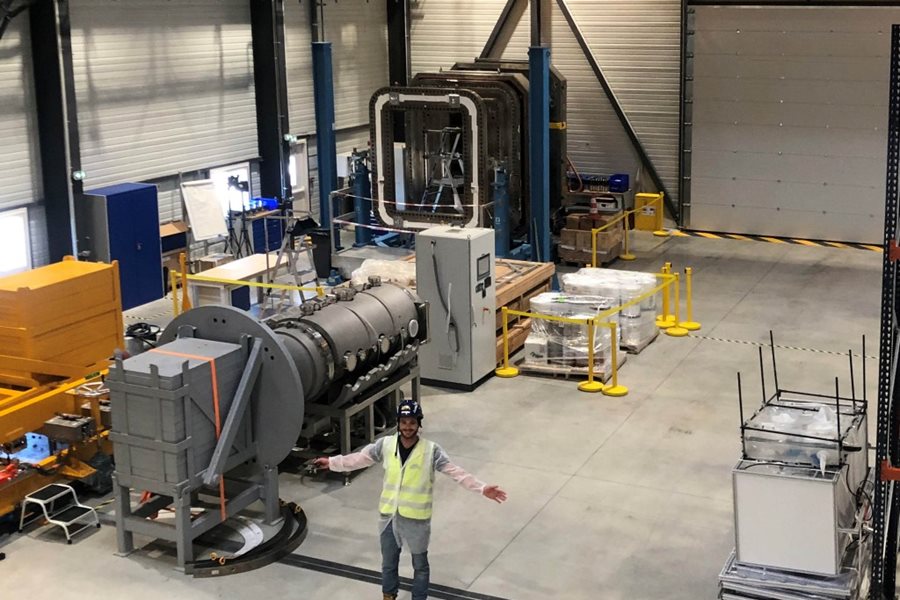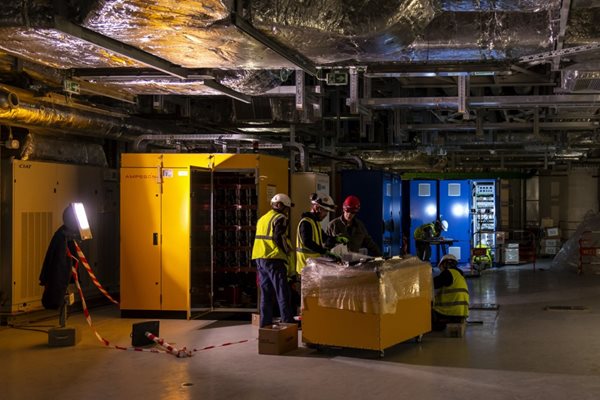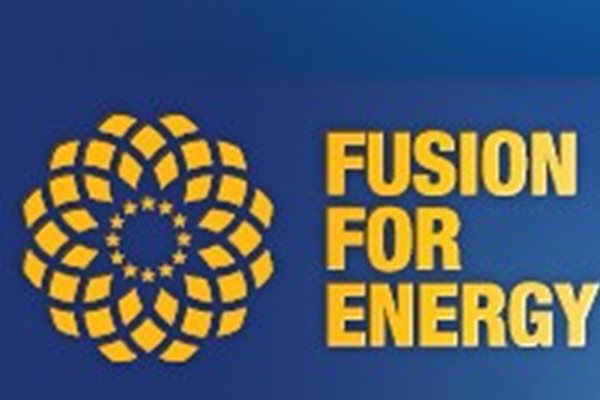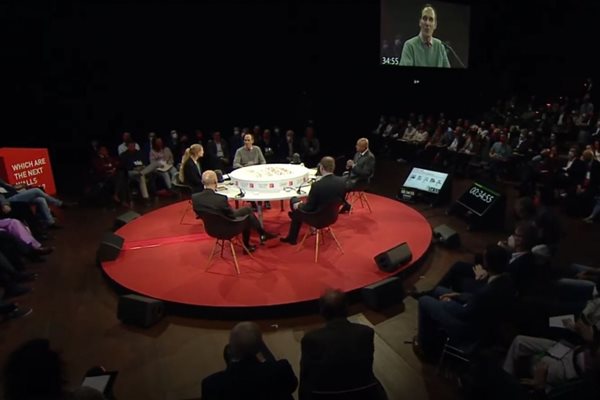
you're currently reading the news digest published from 07 Nov 2022 to 14 Nov 2022
featured2
of-interest2
press20
featured
Space management | Optimizing every square metre
Building management is a constant challenge at ITER. The American statesman Ben Franklin is credited with saying that a successful organization requires 'a place for everything and everything in its place.' Or, as ITER Facility Management Officer Guillaume Roux puts it, 'you don't want to put a cat in a room built for an elephant.' The quest to maximize the use of space on the ITER site has been a preoccupation since building began in 2010—both on the 42-hectare platform that houses the ITER research infrastructure and in the surrounding office, storage, and contractor zones. 'Even if the site seems big, there isn't enough space,' explains Roux, who's been with ITER's Construction Management Office (CMO) since 2019. 'As the construction needs evolve, you have to create use-of-space scenarios for the buildings with different risks and costs so you can foresee every possible situation and make sure everything fits together properly.' A recent example arose when the square footage dedicated to the temporary vacuum laboratory in the basement of ITER Headquarters was needed for ITER's data centre. A new vacuum lab was required and, ideally, it would offer even more space so that larger components, such as the huge seals for the vacuum vessel port plugs, could be tested. 'We've needed to consolidate space used across the ITER and CEA sites into one proper lab for a while,' says Robert Pearce, the Vacuum Delivery & Installation Section Leader. 'It's essential for confirming components are correct in design and construction before entering the tokamak.' The project began to take shape under Roux's guidance in 2020. After the lab's technical specifications were established with upgrades—such as a 20-tonne interior crane instead of the old 1-tonne crane—it became a question of location. One space-saving option was to put the lab outside ITER, but this added logistical obstacles. Another was to try and squeeze the lab into an existing building on the main ITER platform, but these structures are in high demand and thus every square metre is incredibly valuable. ITER leaders opted for a new facility, Building 99, and found a location in a new contractors area under development at the northwestern edge of the platform. Because it is more efficient to have multiple laboratories in a single building, a search was launched for a partner to share the space and budget. A fitting candidate was soon identified: the Tritium Plant Section, which would need a facility to test prototype and first-production units using hydrogen and deuterium, such as the hydride beds that will be used to safely and passively store fuel for the plasma. 'Our need wasn't as pressing but my vision is holistic,' says Ian Bonnett, the Tritium Plant Section Leader. 'A workshop was required to support vacuum systems before First Plasma, so we joined the project and will add tritium plant equipment progressively as we move forward.' With the partners in place, a budget was approved for a building with 740m² of floor space for major testing and a 140m² mezzanine for lighter testing. The tender went out in January 2021 and a consortium of French firms—CHAPUS as leader along with MCM, FCIE, and Actemium—began construction in May 2021. For Roux, who grew up in a family of masons and previously had his own construction company, this part was second nature. 'One of my added values is the experience I have in the building sector,' he explains. 'This helps me to prepare realistic schedules and cost estimates and make sure everything is delivered on time and on budget.' Building 99 was officially opened in January 2022 and testing of vacuum components is underway, with the first tritium equipment likely to be installed in 2023. Roux could not attend the opening ceremony due to paternity leave, but that didn't bother him. 'I am just happy to see the equipment and the activity in the building,' says Roux with a smile. 'It means my plan worked and the building was delivered on deadline.'
Radio Frequency Building | Installing the first power supply sets
When the plasma in the ITER vacuum vessel is fed sufficient power, the velocity that the particles acquire causes them to collide, fuse and generate considerable amounts of energy. Particle velocity in the plasma can be expressed as temperature: in a deuterium-tritium plasma, the temperature threshold at which fusion reactions occur is in the range of 150 million degrees Celsius. To achieve such extreme temperature in the core of the plasma, ITER will rely on three external heating systems: neutral beam injection, electron cyclotron resonance heating (ECRH) and ion cyclotron resonance heating (ICRH). In the Radio Frequency Building, standing against the northeast side of the Assembly Hall, equipment installation for the ECRH system has begun. An ECRH installation is based on the same principle as that of a microwave oven: electrical power is converted into electromagnetic waves whose frequency matches the oscillations of the particles in a given environment—a matching called "resonance." In the kitchen, the frequency is calibrated for water molecules; in ITER the ECRH system is designed to resonate with the electrons in the plasma. Another difference of course is size and power: whereas a kitchen microwave oven delivers 700 to 800 watts to the bowl of soup or frozen pizza placed inside it, the ITER ECRH system will feed 20 million watts (20 MW) to the plasma, which happens to be more than one hundred metres distant from the wave-generating equipment. The ECRH system occupies about half of the available surface in the three-level Radio Frequency Building, which is 50 metres long, 43 metres wide, and 25 metres high. (The other half of the building is reserved for ICRH equipment, whose installation has not yet started.) The uppermost level will accommodate 24 ECRH devices, called gyrotrons, that generate the electromagnetic waves, as well as the set of transmission lines ('waveguides') that will deliver them to the plasma. Gyrotrons are high-tech components that took close to two decades to develop and bring up to ITER requirements. They are procured by Japan (2 out of 8 delivered), Russia (4 out of 8 delivered), Europe (4) and India (4). US ITER has finalized the design of the transmission lines (4 km in total) and manufacturing is set to begin. Gyrotron performance depends heavily on the 'quality' of the electrical current that powers them: dynamics and accuracy on the output voltage are key for their optimal performance. On the floors below the gyrotrons, 12 sets of high-voltage power supplies will be installed to convert 22 kV AC current to the high-voltage DC current (55 kV-110 A) required. Procurement of the power supplies is shared between Europe (8) and India (4). European contractor Ampegon, a Swiss company, designed and manufactured the power supply systems of the European and Russian gyrotrons and is presently installing the second of the eight European sets. During its first phase of operation, ITER will rely on ECRH heating (and not even all of its capacity). As ICRH and neutral beam systems are progressively installed and commissioned, ITER will acquire the heating power required to initiate fusion reactions in the deuterium-tritium plasma.
of-interest
Open call: Fusion technology transfer award
If you are a European company registered in a Fusion for Energy (F4E) member country, you can apply by 17 February 2023 to F4E's Technology Transfer Fusion Demonstrator Project Award. The award (EUR 35,000) will go to a company that sees a use for its fusion technology outside of the traditional fusion market. In collaboration with In Extenso Innovation Croissance, Fusion for Energy seeks to unleash your entrepreneurial potential by helping you to carry out a project that integrates a fusion technology in a non-fusion application. To read more about the requirements and guidelines, see this open call. For more information about F4E's Technology Transfer Marketplace, click here.
ITER @ Falling Walls, Berlin
For three days every year, the Falling Walls Science Summit in Berlin invites some of the most important researchers and thinkers of the day to discuss "Which are the next walls to fall in science and society?" with global leaders in science, politics, business, and the media. During the 2022 edition, a panel titled "Advances in Fusion Technology/Breakthrough in Unlimited Energy Generation" was animated by Constantin Häfner, Managing Director of the Fraunhofer Institute for Laser Technology ILT; Peter Leibinger, Vice Chairman and CTO of TRUMPF (high-tech manufacturing solutions); ITER's Chief Scientist Tim Luce; and Vinod Philip, Member of the Executive Board of Siemens Energy. The discussion was moderated by plasma physicist Melanie Windridge, Founder of Fusion Energy Insights. The main takeaway of the 50-minute discussion was that fusion energy should no longer be considered a "technology of the future." Just as mature science is converging with increasingly powerful technologies such as AI and computer modelling, there is a real interest—and real investment—by governments and the private sector. It is a good time for industry to get involved, both from the point of view of helping to solve the technical challenges that remain and for the kind of long-term visionary bets that can help accelerate the emergence of a fusion industry. Replay the livestream of the event on the Falling Walls website here (from 6:26:50 to 7:18:16).



